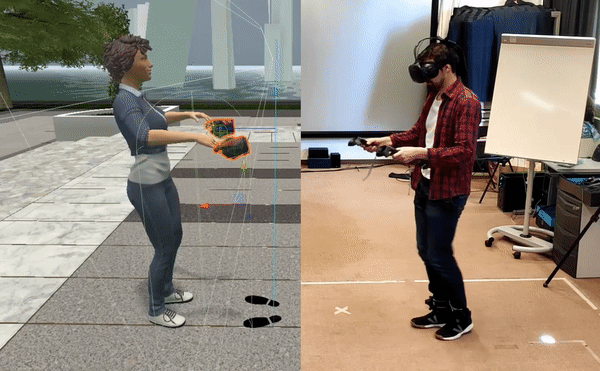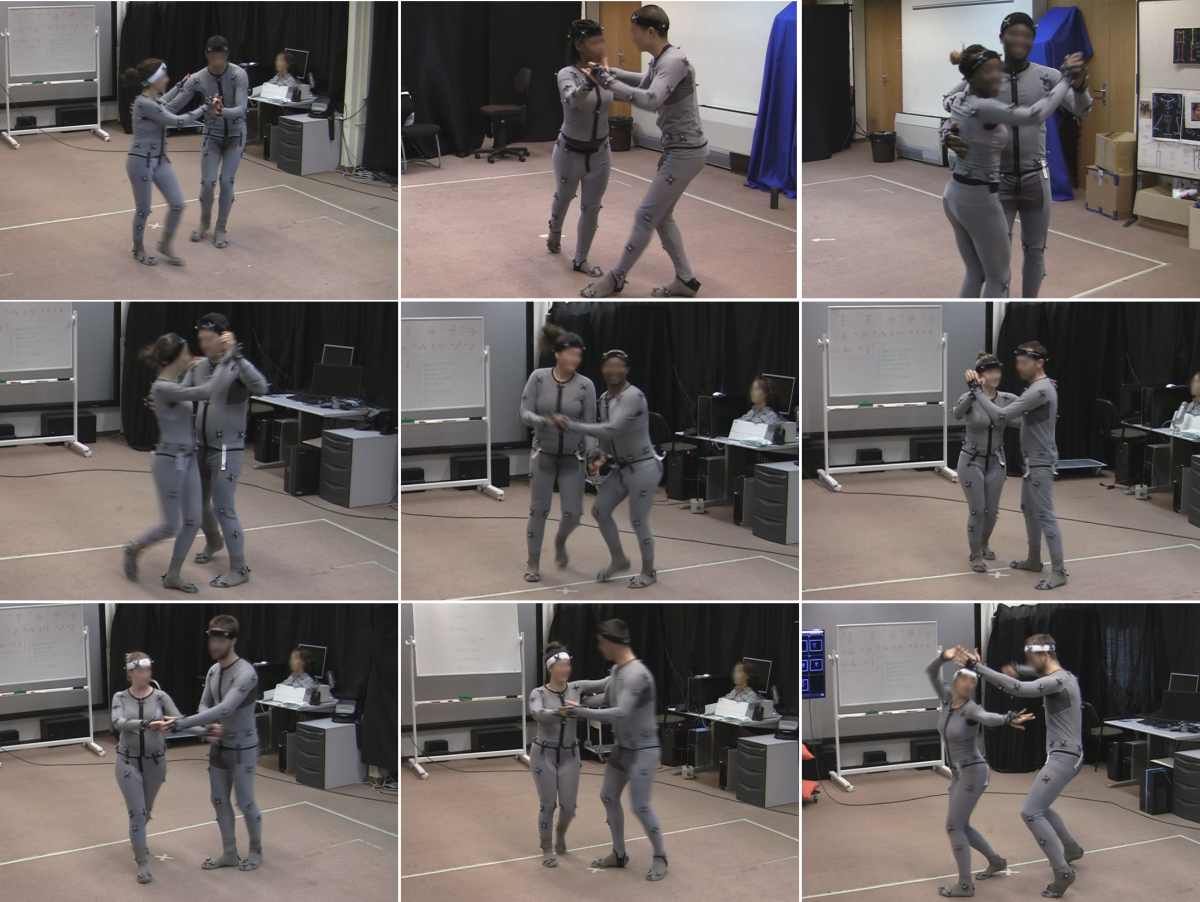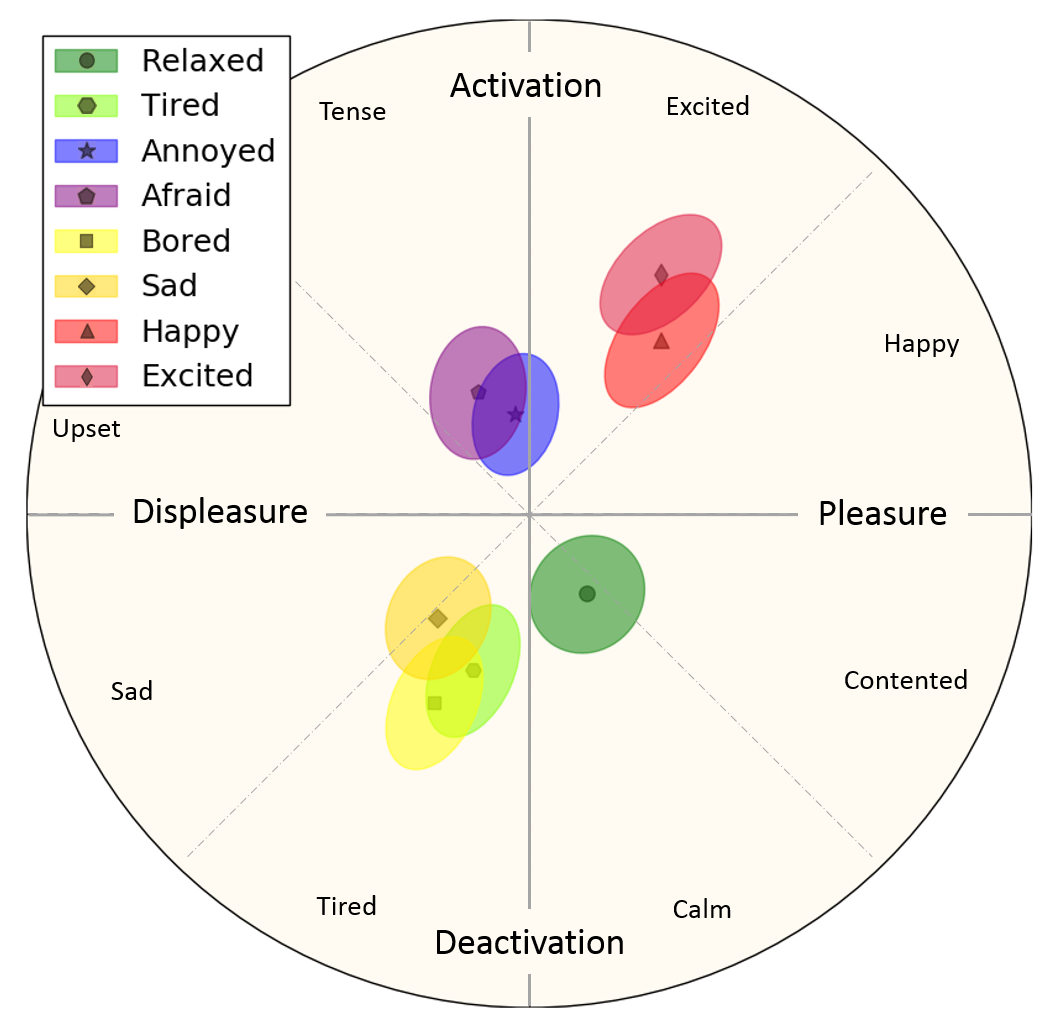Publications
Salsa dance learning evaluation and motion analysis in gamified virtual reality environment
Multimedia Tools and Applications, 79 (33-34): 24621-24643, September 2020.
We propose an interactive learning application in the form of a virtual reality game, that aims to help users to improve their salsa dancing skills. The application consists of three components, a virtual partner with interactive control to dance with, visual and haptic feedback, and a game mechanic with dance tasks. Learning is evaluated and analyzed using Musical Motion Features and the Laban Motion Analysis system, prior and after training, showing convergence of the profile of non-dancer toward the profile of regular dancers, which validates the learning process.
Classification of Salsa Dance Level using Music and Interaction based Motion Features
Proceedings of the 14th International Joint Conference on Computer Vision, Imaging and Computer Graphics Theory and Applications, VISIGRAPP 2019, Volume 1: GRAPP, Prague, Czech Republic, February 25-27, 2019
SciTePress 2019, ISBN 978-989-758-354-4
We propose a system for continuous emotional behavior recognition expressed by people during communication based on their gesture and their whole body dynamical motion. The features used to classify the motion are inspired by the Laban Movement Analysis. Using a trained neural network and annotated data, our system is able to describe the motion behavior as trajectories on the Russell Circumplex Model diagram during theater performances over time.
Motion analysis and classification of salsa dance using music-related motion features
Learning couple dance such as Salsa is a challenge for modern human as it requires to assimilate and understand correctly all the required parameters. In this paper, we propose a set of music-related motion features (MMF) allowing to describe, analyse and classify salsa dancer couple in their respective learning state (beginner, intermediate and expert). These dance qualities have been proposed from a systematic review of papers cross linked with interviews from teacher and professionals in the field of social dance. We investigated how to extract these MMF from musical data and 3D movements of dancers in order to propose a new algorithm to compute them. For the presented study, a motion capture database (SALSA) has been recorded of 26 different couples with varying skill levels dancing on 10 different tempos (260 clips)
Continuous body emotion recognition system during theater performances
We propose a system for continuous emotional behavior recognition expressed by people during communication based on their gesture and their whole body dynamical motion. The features used to classify the motion are inspired by the Laban Movement Analysis. Using a trained neural network and annotated data, our system is able to describe the motion behavior as trajectories on the Russell Circumplex Model diagram during theater performances over time.
Learning and understanding partner dance through motion analysis in a virtual environment (PhD thesis)
Partner dance is a physical activity that is social and involves two partners dancing to music. Learning such dance is difficult and presents many challenges, such as finding a partner, learning the right skills, etc. Through the motion analysis of couples as entities with regards to tempos, we aim at developing new ways to understand and characterize partner dance. We are proposing a set of features that can extract high-level information from low-level data…
~ BibTeX ~
@article{Senecal_2020,
doi = {10.1007/s11042-020-09192-y},
url = {https://doi.org/10.1007%2Fs11042-020-09192-y},
year = {2020},
month = {jun},
publisher = {Springer Science and Business Media {LLC}},
volume = {79},
number = {33-34},
pages = {24621–24643},
author = {Simon Senecal and Niels A. Nijdam and Andreas Aristidou and Nadia Magnenat-Thalmann},
title = {Salsa dance learning evaluation and motion analysis in gamified virtual reality environment},
journal = {Multimedia Tools and Applications}
}
~ BibTeX ~
@article{Senecal2019,
title = {Classification of salsa dance level using music and interaction based motion features},
journal = {VISIGRAPP 2019 – Proceedings of the 14th International Joint Conference on Computer Vision, Imaging and Computer Graphics Theory and Applications},
year = {2019},
volume = {1},
pages = {100-109},
author = {Senecal, S. and Nijdam, N.A. and Thalmann, N.M.}
}
~ BibTeX ~
@article{Senecal2018,
title = {Motion analysis and classification of salsa dance using music-related motion features},
journal = {Proceedings – MIG 2018: ACM SIGGRAPH Conference on Motion, Interaction, and Games},
year = {2018},
author = {Senecal, S. and Nijdam, N.A. and Thalmann, N.M.}
}
~ BibTeX ~
@article{Senecal2016,
title = {Continuous body emotion recognition system during theater performances},
journal = {Computer Animation and Virtual Worlds},
year = {2016},
volume = {27},
number = {3-4},
pages = {311-320},
author = {Senecal, S. and Cuel, L. and Aristidou, A. and Magnenat-Thalmann, N.}
}
~ BibTeX ~
@phdthesis{SenecalThesis,
title = {Learning and understanding partner dance through motion analysis in a virtual environment},
author = {SENECAL, Simon},
year = 2020,
note = {Available at \url{10.13097/archive-ouverte/unige:142477}},
school = {University of Geneva},
type = {PhD thesis}
}




